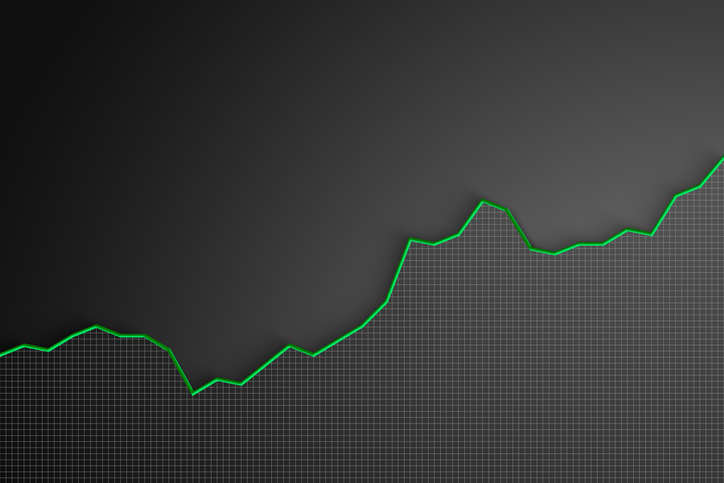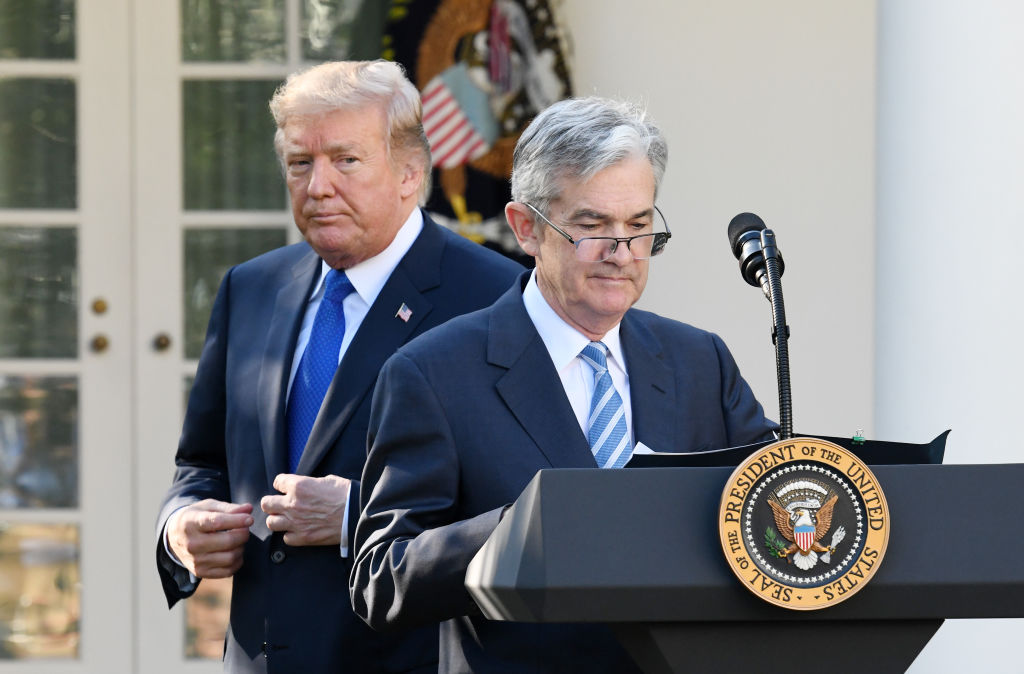What's in Store for the Bull Market in 2025?
The current bull market recently turned two and most – but not all – Wall Street pros expect the party to continue in the new year.


Is a stock-market three-peat in store for 2025?
After a brutal start to the '20s that saw us absorb two bear markets in three years, the bulls have taken full control of Wall Street. The S&P 500 delivered a 26% total return (price plus dividends) in 2023, and with 2024 nearly wrapped up, the ubiquitous equity index is pacing for a 20%-plus return yet again.
At the very least, that sets the table for a third consecutive year of gains.

Sign up for Kiplinger’s Free E-Newsletters
Profit and prosper with the best of expert advice on investing, taxes, retirement, personal finance and more - straight to your e-mail.
Profit and prosper with the best of expert advice - straight to your e-mail.
Three-year streaks certainly aren't unusual. John Eade, president of independent research firm Argus Research, presents this data in his outfit's 2025 outlook:
"There have been eight instances since 1960 in which the stock market has risen at least three years in a row, including long runs of eight years in the 1980s and nine years in the 1990s, and the period from 2009-2017."
But will we finish in the green in 2025?
Here, we review what a handful of experts have projected as they look ahead to prospects of this current bull market continuing for another year.
The pros' S&P 500 targets for 2025
Before we get into the "why," let's start with "how high?"
Below is a list of more than a dozen research firms' end-of-year 2025 targets for the S&P 500, as well as a broader consensus target collected by FactSet (with a tip of the cap to John Butters):
| Research firm | 2025 S&P 500 price target | % upside from December 27 close |
| Oppenheimer | 7,100 | 18.9% |
| Wells Fargo | 7,007 | 17.4% |
| Deutsche Bank | 7,000 | 17.3% |
| Yardeni Research | 7,000 | 17.3% |
| Societe Generale | 6,750 | 13.1% |
| BMO Capital Markets | 6,700 | 12.2% |
| HSBC Global Research | 6,700 | 12.2% |
| FactSet Industry Aggregate Average | 6,678 | 11.9% |
| BofA Global Research | 6,666 | 11.7% |
| Barclays | 6,600 | 10.6% |
| RBC | 6,600 | 10.6% |
| CFRA | 6,585 | 10.3% |
| Morgan Stanley | 6,500 | 8.9% |
| Goldman Sachs | 6,500 | 8.9% |
| JPMorgan | 6,500 | 8.9% |
| Stifel | 5,500 | -7.9% |
In short: The vast majority of these research houses believe the S&P 500 will finish not just higher, but by double digits … though only one (Oppenheimer) reads another 20%-plus return in the tea leaves. And Stifel has some sour milk for your Cheerios.
Here is what some of these firms have to say about their 2025 views:
Oppenheimer (S&P 500 2025 target: 7,100)
The highest price target on this list is "based on a number of factors including current stateside monetary policy, the resilience in economic growth, business activity, the consumer, and job creation evidenced in recent years and the current year," writes John Stoltzfus, managing director and chief investment strategist at Oppenheimer Asset Management.
Oppenheimer also thinks earnings will do some of the lifting – they project $275 per share in earnings for the index, which would be a 10% increase over their projected 2024 profits ($250).
And yes, if you did the math, that means the S&P 500 would trade at nearly 26 times those earnings.
But Oppenheimer also sees a few other contributing factors:
- "Beyond fundamentals that suggest to us further upside for equities from current levels there is increased private investor appetite across demographic groups for equities." This is built on "needs-based investing," as Americans invest to meet responsibilities such as retirement (and a potentially longer retirement period with less contribution from Social Security and pensions), children's education, family legacy and charity.
- "The quality of economic, business, consumer and job growth data from the start of the Fed's rate hike cycle in March of 2022 through the initial cuts to its benchmark interest rate in September, November and December.
- "Artificial intelligence (AI) presents in our view a watershed point on the historic timeline of technology and economic progress that may parallel the automobile's contribution to the economy from the 1920s. … In the equity markets, companies in all 11 sectors could benefit from improved productivity via AI to further serve the needs of business and customers."
BofA Global Research (S&P 500 2025 target: 6,666)
BofA's Equity and Quant Strategy team says to "get ready for a cyclical inferno," and they provide a succinct breakdown as to why:
"Nine reasons: (1) Red sweep, (2) Fed cuts, (3) accelerating profits, (4) reshoring, (5) productivity cycle, (6) shift from everyone spending on tech to tech spending on everything, (7) municipalities refurbishing to court corporates, (8) tight capacity / decades of underspend in manufacturing, and (9) lightest positioning in cyclical sectors since at least the [Global Financial Crisis]."
For what it's worth, though, BofA's researchers say they "see more opportunities in stocks than the index. In particular, we like companies with healthy cash return prospects and a tether to the U.S. economy." In terms of where to invest, the group likes the following sectors: financials, consumer discretionary, materials, real estate and utilities.
JPMorgan (S&P 500 2025 target: 6,500)
"We are positive on U.S. risky assets in a world where U.S. exceptionalism gets reinforced, amidst a prolonged business cycle with ongoing easing from central banks and with additional support coming from Fed ending [quantitative tightening] in the first quarter of 2025," JPMorgan's Global Research team writes. "Solid labor market dynamics, potentially lower energy prices, and a pro-business driven new U.S. administration should help U.S. consumers and [corporations].
"Further easing in rates should help broaden the earnings recovery within S&P 500 and across the size spectrum," the group adds.
JPMorgan does warn, however, that high valuations and positioning could endanger the bull case, "especially if the Fed opens the door to potential hikes later in 2025."
Argus Research (S&P 500 2025 target: N/A*)
Jim Kelleher, director of research at Argus Research, notes that his firm recently raised its earnings forecast for 2025, to $276 per share, from $265 previously, representing full-year earnings-per-share growth of about 12%.
"Our increased optimism toward 2025 earnings reflects expected better performance for three sectors that were negative in the third quarter of 2024: energy, materials and industrials. We expect the energy sector's annual earnings decline to moderate in the fourth quarter of 2024 and the first quarter of 2025 and 1Q25 before swinging to a modest positive in the second quarter."
Kelleher adds that materials and industrial stocks could swing to positive comparisons more quickly.
Argus's Eade lays out their rationale:
"In our base case (S&P 500 +10% to +15%), GDP growth moderates to about 2%, and once again the U.S. avoids recession. S&P 500 continuing-operations earnings grow at a low double-digit percentage rate. The core inflation rate finally falls to the 2% range that is the Fed's target range, and the Fed maintains its go-slow rate-cutting program with a total of three rate cuts of 25 basis points each."
He adds that their bull case (S&P 500 +20%) would involve "successful policies from the new president and improved global GDP growth." Meanwhile, the bear case – "tariff and trade wars could cause inflation to heat back up, [and] unemployment rises to 5% as the economy falters" – could see the S&P 500 fall into correction.
* Argus Research expects to release an S&P 500 price target early in 2025. For now, their projection for the S&P 500 is an upside range of 10% to 15%, as of December 4. Based on the S&P 500's December 3, 2024, close at 6,049.88, that would imply a 2025 index price of between 6,655 and 6,957.
Stifel (S&P 500 2025 target: 5,500)
And what does Stifel have to say about its prediction for downside in the index?
"Our 2025 view is that U.S. real GDP decelerates to about 1.5% in the second half of 2025 [the most recent data showed 2.8% growth in Q3 2024] with sticky core PCE [Personal Consumption and Expenditures Price Index] inflation just under 3%, contributing to an S&P 500 correction of 10% to 15% by 2H25."
The group adds that it expects economic growth to slow in the second half "as lower real wages (slowing wages combined with flat inflation) pressure consumption growth, while fixed investment and net exports also weaken." And this will all occur as stock valuations and growth reach extremes.
The group also expects the Federal Reserve to pause its rate-cutting campaign at the next Fed meeting in January "due to sticky inflation and zero fiscal visibility, with the inflation-leery Fed standing pat too long in the second half of 2025 despite GDP slowing. That puts the greatest risk around mid-2025 from an economic and policy standpoint."
Additionally, Stifel notes that "in the span of U.S. history there have been few Great Disruptors like the incoming administration, which may have two years to cement its agenda, adding headline risk to the first half of 2025."
Related content
Get Kiplinger Today newsletter — free
Profit and prosper with the best of Kiplinger's advice on investing, taxes, retirement, personal finance and much more. Delivered daily. Enter your email in the box and click Sign Me Up.
Kyle Woodley is the Editor-in-Chief of WealthUp, a site dedicated to improving the personal finances and financial literacy of people of all ages. He also writes the weekly The Weekend Tea newsletter, which covers both news and analysis about spending, saving, investing, the economy and more.
Kyle was previously the Senior Investing Editor for Kiplinger.com, and the Managing Editor for InvestorPlace.com before that. His work has appeared in several outlets, including Yahoo! Finance, MSN Money, Barchart, The Globe & Mail and the Nasdaq. He also has appeared as a guest on Fox Business Network and Money Radio, among other shows and podcasts, and he has been quoted in several outlets, including MarketWatch, Vice and Univision. He is a proud graduate of The Ohio State University, where he earned a BA in journalism.
You can check out his thoughts on the markets (and more) at @KyleWoodley.
-
 Ten Cheapest Places To Live in Florida
Ten Cheapest Places To Live in FloridaProperty Tax Make your Florida vacation spot daily living — these counties have the lowest property tax bills in the state.
By Kate Schubel
-
 I'm 50 and my home is worth $5 million. Can I retire now?
I'm 50 and my home is worth $5 million. Can I retire now?It may be oh-so tempting to cash out your upscale home and leave work for good. But should you? We ask the experts.
By Maurie Backman
-
 Tesla Stock Pops as Elon Musk Promises DOGE Draw Back
Tesla Stock Pops as Elon Musk Promises DOGE Draw BackTesla reported a sharp drop in first-quarter earnings and sales, as the EV maker suffered a backlash to its CEO's political ambitions.
By Karee Venema
-
 Bouncing Back: New Tunes for Millennials Trying to Make It
Bouncing Back: New Tunes for Millennials Trying to Make ItAdele's mournful melodies kick off this generation's financial playlist, but with the right plan, Millennials can finish strong.
By Alvina Lo
-
 Early-Stage Startup Deals: How Do Convertible Notes Work?
Early-Stage Startup Deals: How Do Convertible Notes Work?Some angel investors support early startups by providing a loan in exchange for a convertible note, which includes annual interest and a maturity date.
By Murat Abdrakhmanov
-
 Stock Market Today: Stocks Soar on China Trade Talk Hopes
Stock Market Today: Stocks Soar on China Trade Talk HopesTreasury Secretary Bessent said current U.S.-China trade relations are unsustainable and signaled hopes for negotiations.
By Karee Venema
-
 How Can Investors Profit From AI's Energy Use?
How Can Investors Profit From AI's Energy Use?Global energy demand is expected to grow by leaps and bounds over the next several years as AI usage accelerates. Here's how to get a piece of the pie.
By Jacob Schroeder
-
 Can Trump Fire Powell? A Supreme Court Case Could Decide
Can Trump Fire Powell? A Supreme Court Case Could DecidePresidential posts threaten to overwhelm decades of precedent and tradition, whatever the nine justices decide.
By David Dittman
-
 What Are AI Agents and What Can They Do for You?
What Are AI Agents and What Can They Do for You?AI agents promise to be the next big thing in artificial intelligence, but what exactly do they do?
By Tom Taulli
-
 Should You Buy an iPhone Now Before Tariffs Hit?
Should You Buy an iPhone Now Before Tariffs Hit?Looming tariffs can make an iPhone purchase seem urgent. Here's what to do if you need another phone but want to save money.
By Laura Gariepy